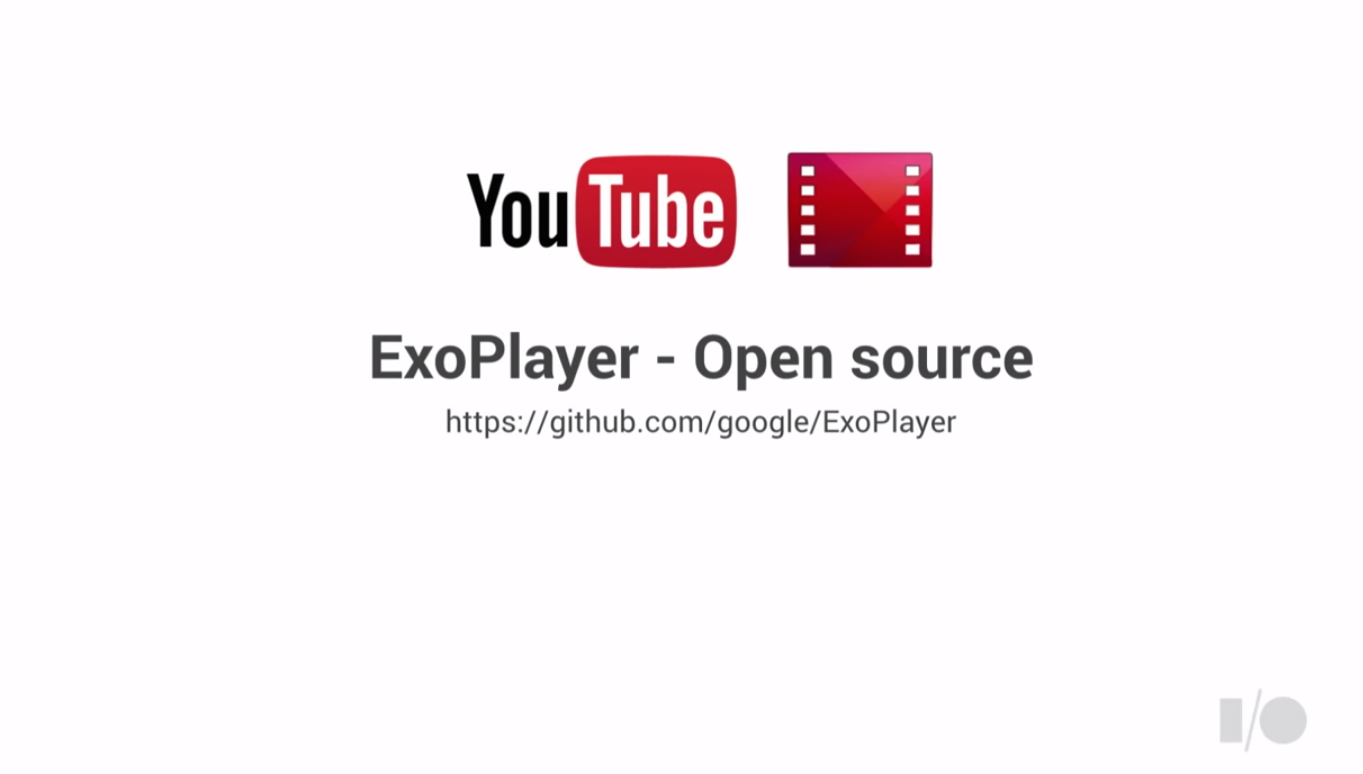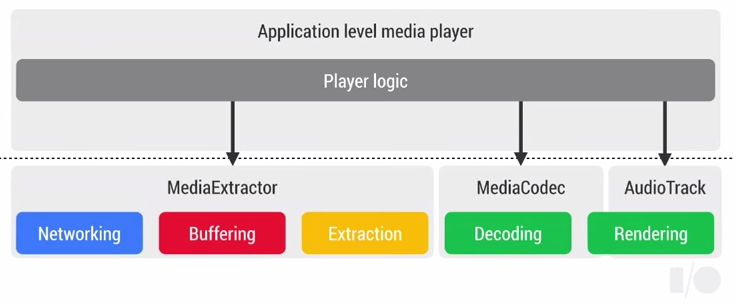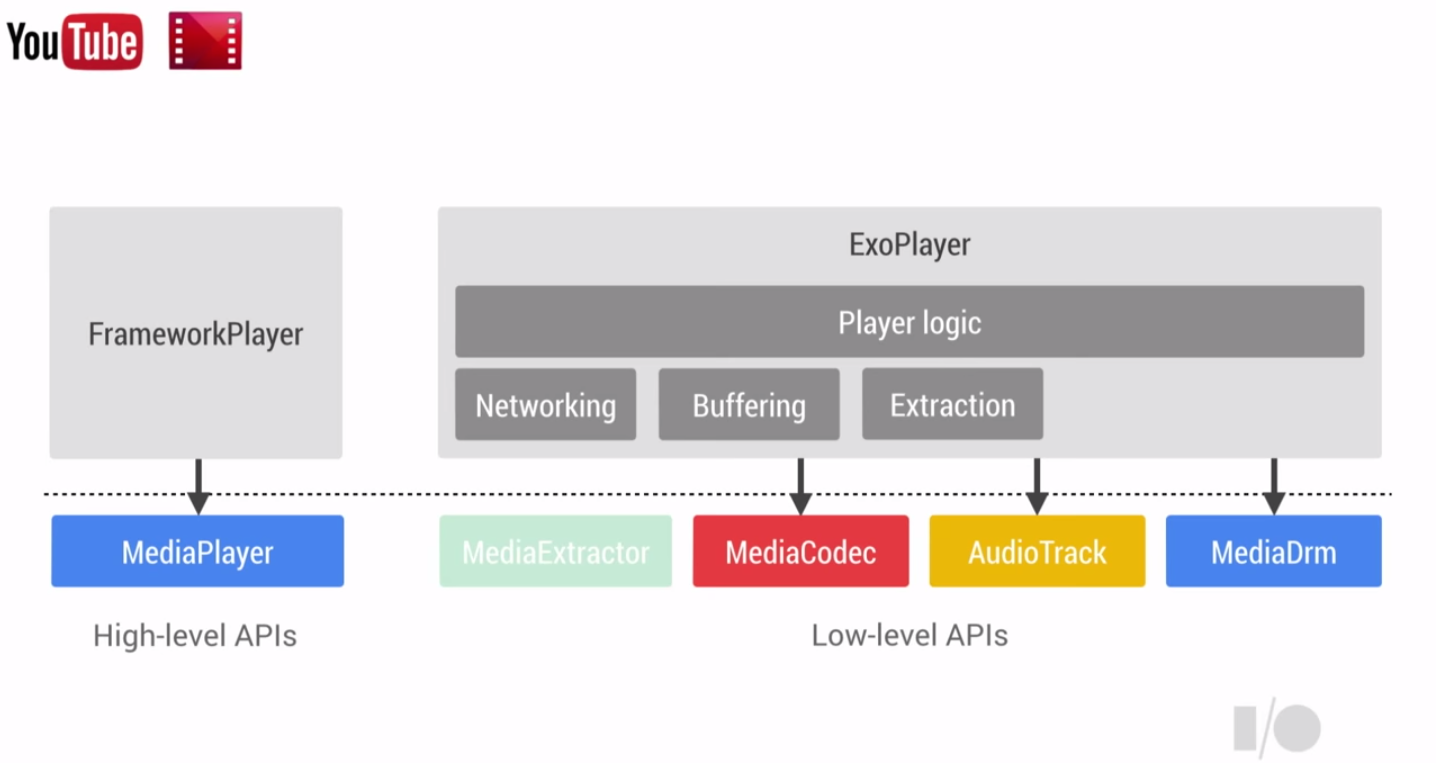ExoPlayer – An application level media player for Android

Before ExoPlayer
之前 MediaPlayer 的用法
1 2 3 4 | |

MediaPlayer 隱藏很多的細節
方便使用卻難以客制化
例如自訂 buffer policy 或 cache
在 Jelly Bean 版本
Google 提供 MediaExtractor,MediaCodec and AudioTrack low-level API

讓 media player 方便去做客制化

What’s DASH
允許在播放的期間,依照網路速度調整影片的品質
ExoPlayer Benefit
- Youtube use
- 支援 Dynamic adaptive streaming over HTTP (DASH) and SmoothStreaming playback
- DRM 保護
- ExoPlayer gives a lot more control
- ExoPlayer can easily update

- 減少啟動播放的延遲時間約 65%
- 重新 buffer 的機率少了 40%
- 平均播放高解析度影片的機率多了 11%
核心


提供
TrackRenderer
一個 abstract class
負責處理 video,audio 或 text 的播放
ExoPlayer library 提供這些 implements class:
- MediaCodecVideoTrackRenderer as the default implementations rendering video
- MediaCodecAudioTrackRenderer for audio
- TextTrackRenderer for text
SampleSource
TrackRenderer 需要 SampleSource (interface)
它負責提供 格式資訊 和 media sample
ExoPlayer library 提供這些 implements class:
- FrameworkSampleSource 使用 MediaExtractor 來 request,buffer 和解析 media sample! FrameworkSampleSource
1 2 3 4 5 6 7 8 | |
注意到,video 和 audio 的來源是同一個 URI,它也能來自不同的 URI,只需要分別給予兩個 FrameworkSampleSource object
ChunkSampleSource 提供 DASH or SmoothStreaming,未使用 MediaExtractor,而是自己實作 networking,buffering 和 media extraction
它需要:
- ChunkSource object,裡面包含 FormatEvaluator 和 DataSource
- FormatEvaluator objects 會在每一塊 chunk 讀取前,去選擇有效的格式
- DataSource objects 的任務就是去讀取資料
- LoadControl object 可以控制 chunk 的 buffering 規則

- ChunkSource object,裡面包含 FormatEvaluator 和 DataSource
Media presentation description parser
MediaPresentationDescriptionParser class to obtain Representation objects from media presentation description(MPD) files
支援格式
See Supported Media Formats for details
參考資料
Google I/O 2014 – Building great multi-media experiences on Android